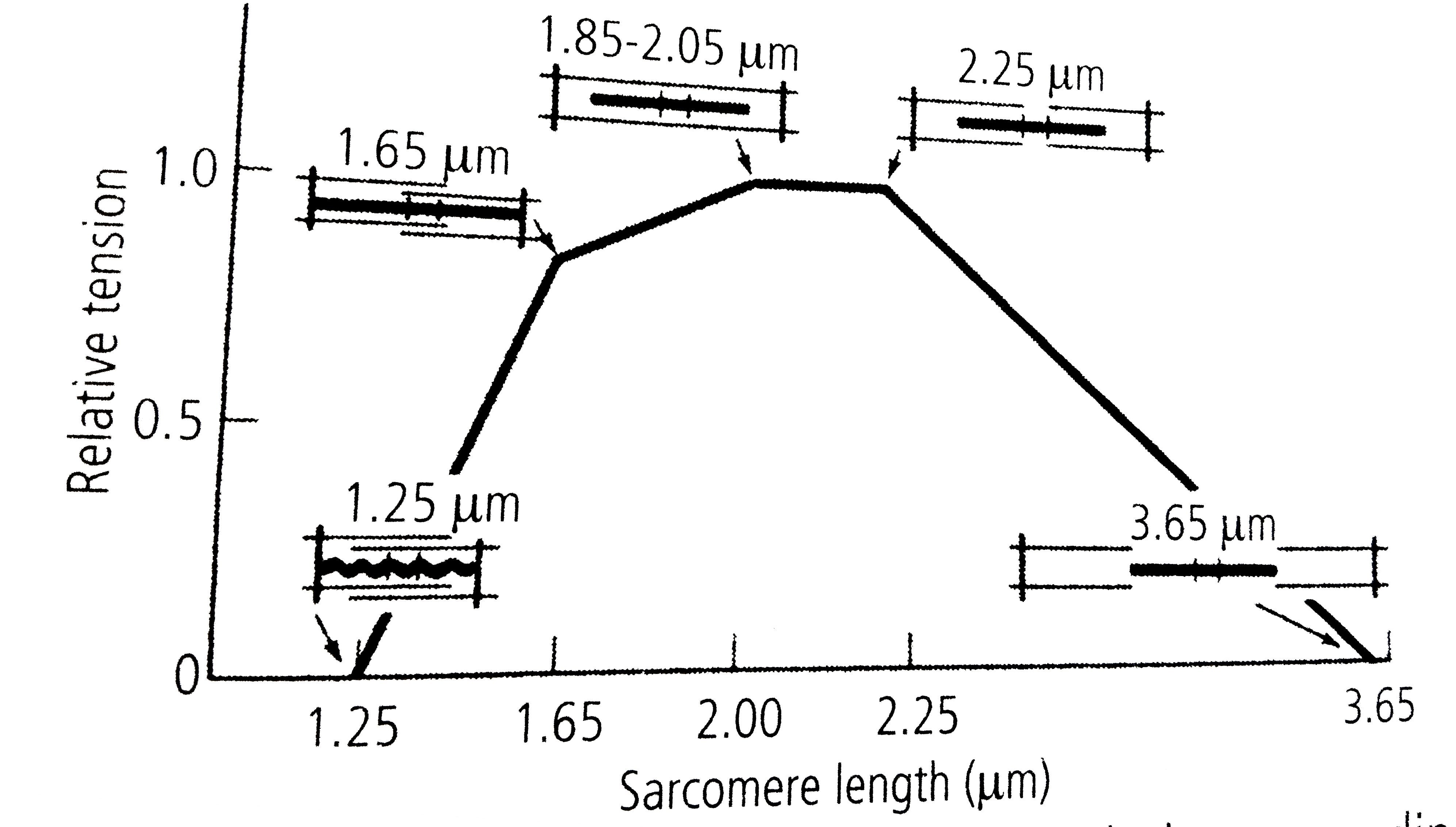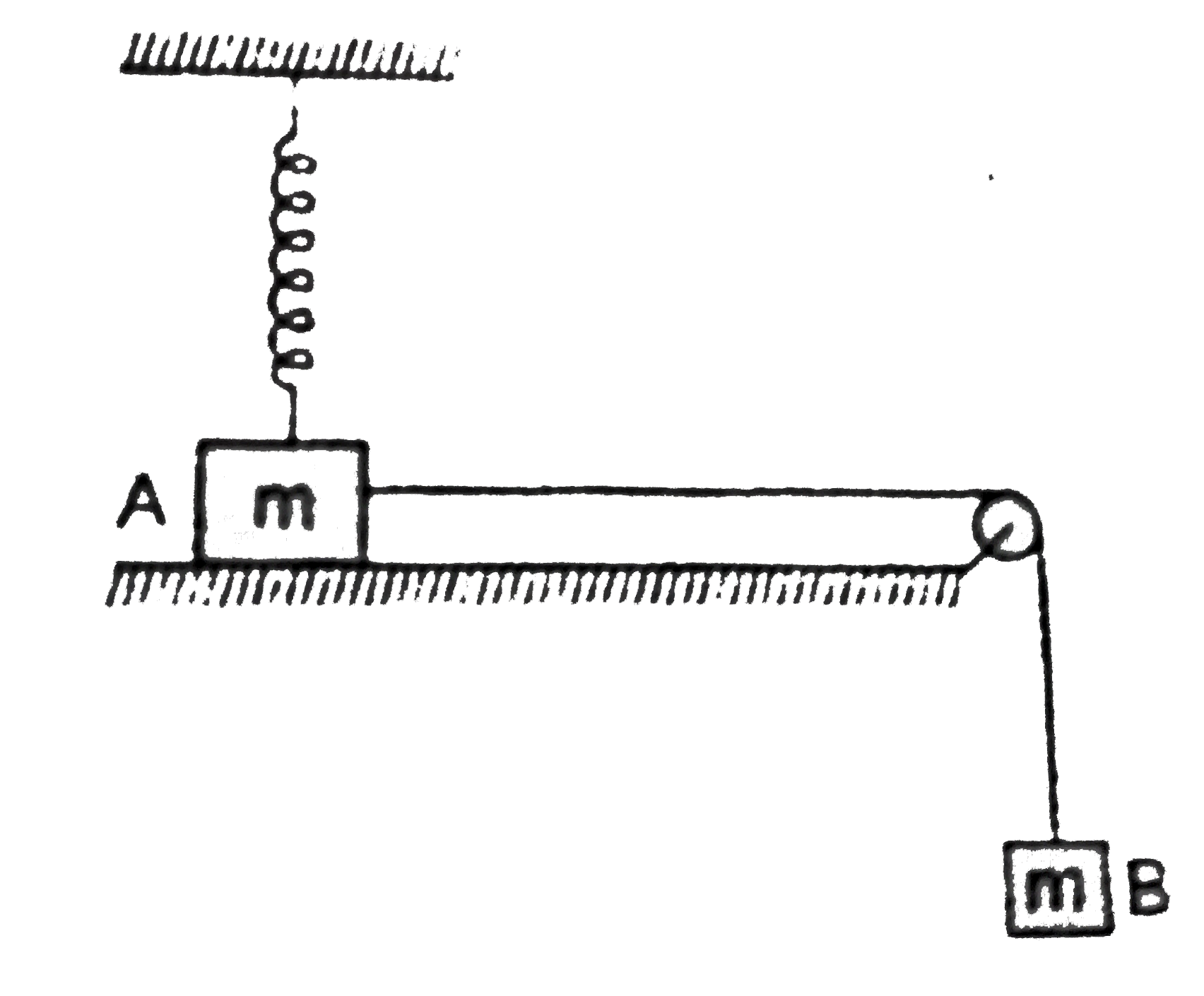During muscle contraction, what could be the correct sequence ?
A. Release of calcium ions into the sarcoplasm.
B. Release of Acetylcholine.
C. Sliding of actin filaments over each other.
D. Break down of ATP to form a cross bridge.
(a) A-D-B-C
(b) A-B-D-C
(c) B-A-C-D
(d) B-A-D-C
The correct Answer is:D
To determine the correct sequence of events during muscle contraction, we can break down the process into a series of steps:
1. Release of Acetylcholine (B): The process begins when an action potential arrives at the neuromuscular junction. This triggers the release of the neurotransmitter acetylcholine from the motor neuron. Acetylcholine binds to receptors on the muscle cell membrane (sarcolemma), leading to depolarization.
2. Release of Calcium Ions (A): The depolarization of the sarcolemma generates an action potential that travels along the T-tubules. This action potential stimulates the sarcoplasmic reticulum to release calcium ions into the sarcoplasm.
3. Breakdown of ATP to Form a Cross Bridge (D): The released calcium ions bind to troponin, causing a conformational change that moves tropomyosin away from the actin binding sites. This allows myosin heads to attach to actin filaments. ATP is then broken down to ADP and inorganic phosphate, which provides the energy needed for the myosin heads to form cross bridges with actin.
4. Sliding of Actin Filaments Over Each Other (C): Once the cross bridges are formed, the myosin heads pivot, pulling the actin filaments toward the center of the sarcomere. This sliding action leads to muscle contraction.
Putting these steps in order, we have:
- B: Release of Acetylcholine
- A: Release of Calcium Ions
- D: Breakdown of ATP to Form a Cross Bridge
- C: Sliding of Actin Filaments Over Each Other
Thus, the correct sequence is B, A, D, C.
Final Answer: The correct sequence during muscle contraction is BADC.
- B: Release of Acetylcholine
- A: Release of Calcium Ions
- D: Breakdown of ATP to Form a Cross Bridge
- C: Sliding of Actin Filaments Over Each Other
Similar Questions
The steps involved in the mechanism of muscle contraction are given below.
Arrange the steps in proper sequential order and select the correct option.
I. Release of calcium ions in the sarcoplasm.
II. Signal sent by the CNS via a motor neuron.
III. Binding of calcium with a subunit of troponin on actin filaments.
IV. Generation of the action potential in the sarcolemma.
V. Binding of myosin head to the exposed active sites on actin to form a cross-bridge.
VI. Inward pulling of ‘Z’ line attached to actin causing shortening of the sarcomere.
VII. Pulling of the attached actin filaments towards the centre of 'A' band.
VIII. Release of neurotransmitter acetylcholine and generation of the action potential in the sarcolemma.
View SolutionGo through the following statements
During muscle contraction, the width of A-band remains constant while I-band shortens.
During muscle contraction, the Ca2+ released from the SR bind to the troponin component of thin filament
The process of muscle contraction is faster in smooth muscle as they have a well developed sarcoplasmic reticulum.
The red muscle fibres have abundant mitochondria, low glycogen and poorly formed sarcoplasmic reticulum.
View Solution
Knowledge Check
Assertion: on stimulation, a muscle cell releases calcium ions (Ca2+) from sarcoplasmic reticulum.
Reason: By reacting with a protien complex, Ca2+ uncover active sites on the actin filaments.AIf both assertion and reason are ture and reason is the corect explanation of assertionBIf both assertion and reason are ture but reson is not the correct explanation of assertionCIf assertion is true reason is falseDIf both assertion and reason are falseFollowing is given a randomly arranged list of events that occur at neuromuscluar junction to trigger mucle contraction.
(i) Receptor sites on sarcolemma
Nerve impulse
(iii) Release of Ca+2 from sarcoplasmic reticulum
(iv) The neurotransmitter acetylcholine is released
(v) Sarcomere shorten (vi) Synaptic cleft
(vii) Spread of impulses over sarcolemmna on T-tubules Which of the following gives the correct sequence of these steps?A(ii)→(iv)→(i)→(vi)→(vii)→(iii)→(v)B(ii)→)(iv)→(vi)→(i)→(vii)→(iii)→(v)C(i)→(ii)→(iii)→(iv)→(v)→(vi)→(vii)D(vii)→(vi)→(v)→(iv)→(iii)→(ii)→(i)The given graph shows length-tension curve for a typical vertebrate sarcomere.

By analysing the graph, what can you deduce regarding the muscle contraction?
(i) Neither the myosin filaments nor the actin thin filaments change in length when a sarcomere shortens or is stretched. Instead, it is the extent of ocerlap between actin and myosin filaments that changes.
(ii) The total tension produced by a sarcomere is proportional to the total number of cross-bridges that can interact with actin filaments, and this number in turn is proportional to the amount of of overlap between thick and thin filaments.
(iii) The tension produced by the muscle is maximal when the overlap between thick and thin filamentss allows the largest number of myosin cross-bridges to bind to actin.
(iv) Tension drops off with increased lenght, because the thick and thin filaments overlap less and fewer cross-bridges can bind.
Tension drops off with decreased length, because thin filaments at the two ends of the secromere begin to collide with each other, preventing further shortening.A(i) OnlyB(i),(iii) and (iv)C(i),(iii),(iv) and (v)D(i),(ii),(iii),(iv) and (v)
Given below are the steps involved in parturition. Arrange them in proper sequence and select the correct option.
I. The induction of mild uterine contractions is called foetal ejection reflex.
II. Stronger uterine contractions causing the further release of oxytocin. III. Origination of signals from the fully developed foetus and placenta.
IV. Release of oxytocin from maternal pituitary
V. Expulsion of baby from the birth canal
(a) III , IV , I , II , V
(b) III, I , IV , II , V
(c) I, III , II , IV ,V
(d) II , IV , III, I,V
View SolutionAssertion :− Skeletal muscle fibre is synctium as the sarcoplasm contains many nuclei.
Reason :− The sarcoplasmic reticulum of the muscle fibre is the store house of calcium ions.
(a) If both Assertion & Reason are True & the Reason is a correct explanation of the Assertion .
(b) If both Assertion & Reason are True but Reason is not a correct explanation of the Assertion
(c) If Assertion is True but the Reason is False.
(d) If both Assertion & Reason are false.
View SolutionFigure shows two block A and B, each having a mass of 320 g connected by a light string passing over a smooth light pulley. The horizontal surface on which the block A can slide is smooth. The block A is attached to spring constant 40N/m whose other end is fixed to a support 40 cm above the horizontal surface. Initially, the spring is vertical and unstretched when the system is released to move. Find the velocity of the block A at the instant it breaks off the surface below it. Take g=10m/s2 .

View SolutionRead the following statements regarding muscle contraction
(i) One ATP utillised for making and breaking of the cross bridge.
(ii) The sarcomere lies between 2 Z-lines
(iii) Troponin blocks the active sites in resting stage
(iv) Ca++ ions help in unmasking active sites on HMM
Choose the correct option
View SolutionIdentify the wrong statements
(a) The substrate binds to active site of enzyme and not fitting into active site
(b) The binding of substrate induces the enzyme to alter its shape
(c ) Chemical bonds of substrate break down not to form now enzyme product complex
(d) The enzyme releases the products of the reaction and run through catalytic cycle once again
View Solution
